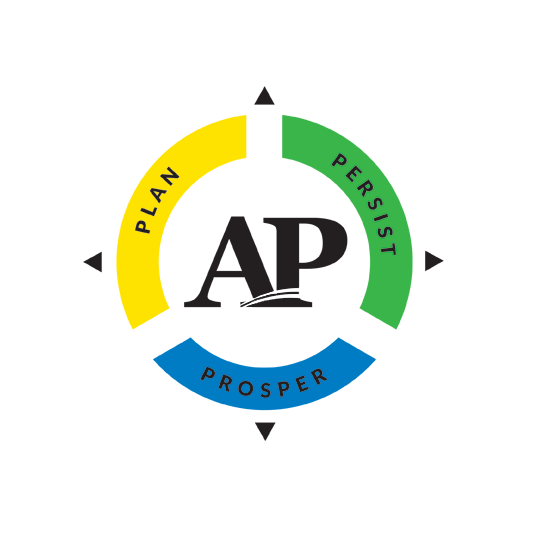Why we can’t do it

Image credit: Serena Wong via Pixabay
Do you pride yourself on your ability to multi-task?
The evidence that our brains can’t multi-task is well-documented. Yet, some people believe this ‘skill’ is necessary. The supporting argument is employers want you to manage competing priorities. They want employees who can shift from one project to another without missing a beat.
While that might be true, employers also want efficiency and productivity. They want employees who can adapt, collaborate, persuade, be creative, and manage time. They want few errors.
This urban legend affects us all. Read on to learn more about what multi-tasking is, how it affects you, and how you can kick the habit!
What is multi-tasking?
Whenever we do more than one task at the same time, or in rapid succession, we’re multi-tasking. If we switch from one task to another, we’re attempting to multi-task. Because we’re often doing it fast, we have the illusion that we’re able to do both things without a problem.
We can’t. It’s not a skill. The costs of trying to making it a skill are many.
Current research highlights the negative effects of a multi-tasking habit. They include:
- decreased productivity
- increased inefficiency
- increased distractibility
- reduction in grey matter
- memory issues
- increased stress (due to information overload)
- more errors
Based on this information, advocating multi-tasking might not be a good idea. But are we multi-tasking when we switch from one project to another? Are we multi-tasking when we answer a phone and help our kid with homework?
No.
What we’re doing is task-switching.
Benefits of Task-Switching
Imagine you’re driving during a thunderstorm with a friend. Your talking about the movie you watched last night. Clouds have darkened the sky. As the rain pounds against the windshield, it’s becoming difficult to see. Your radio, that was once background noise becomes a distraction, so you turn it off. Lightning strikes something in the distance. Your conversation fades as the sound of thunder startles you. Inside the car, you and your friend are quiet as your eyes scan the area.
Your brain assessed the situation and determined that splitting its focus was a bad idea. All your attention turned to navigating your car through a storm. Your senses are on high alert because you identified a threat in your environment. Threats get our full attention.
Task-switching is our unconscious ability to shift our attention. Our brain is capable of doing this lightning fast especially if the task is easy. The more complex a task, the longer it takes to task-switch. But if we’ve become proficient at the two tasks, the switch happens faster.
Here’s another example. Most of us don’t have to think about walking. Consider for a minute the number of movements that must happen for us to do this task.
After we learn to walk, we don’t have to think about the position of our feet. We don’t worry about shifting our weight or stepping forward. This entire task is automatic.
We can walk, talk, and chew gum because these tasks are automatic.
To show the point further, I started training for a 1/2 marathon. The first thing I noticed was the effort and conscious thought it took to run. Why? I’m training on a gravel road.
Every time my foot strikes the ground, the ground ‘gives’ a little. This is different than running on pavement, a track, or a treadmill. The gravel shifts, there’s mud, and on certain days, snow. Each element forces me to think about how to run through it so that I avoid injury (threat.)
Over time as I become more proficient, the conscious effort required to run on gravel will lessen. (I hope!) The process becomes more automatic and switching between tasks is more seamless.
Task-Switching Gone Wrong
Splitting our attention can lead to serious consequences. Yet, we try to do it all the time.
We can’t drive a car and talk on a phone. We can’t walk or cross a busy street while using our phone to text. These tasks are incompatible because we can’t split our attention between them.
Our brains prefer one task at a time.
If you’d like to see more examples, all you need to do is visit YouTube and search “distracted walking/driving.”
Test Your Task-Switching
Are you curious how you perform when switching tasks?
Check out this demonstration.
What’s happening? We’re experiencing residual effects when we go from one task to another. This slows us down. Our brain still stuck in the previous task, hasn’t redirected its attention to the new one. This increases errors and inefficiency.
Switching costs
Let’s say you’re working on a design project, and get pulled away by a phone call. Your brain is still processing design information as you attempt to handle the call. It might take 1 millisecond to switch your attention.
No problem.
You finish your call and return to your project, but your brain is still thinking about the call. This takes a few milliseconds.
Still no problem.
Until you get back into your project, and it all happens again.
When research points to the inefficiency of task-switching, they mean the following:
The interference in accuracy and response time when doing two tasks at the same time, switching between two tasks, or doing tasks in rapid succession
They’re analyzing the time it takes us to focus our attention on the next task. The amount of time might be mere milliseconds, but this adds up with each task-switch. Errors increase, too. You might have noticed that if you took the quiz from early.
6 Examples of Task-switching
- Getting dressed and having a conversation
- Listening to music while reading
- Doing homework and watching TV
- Working on a project and having a non-project related conversation
- Writing in a second language and thinking in your primary language (or vice versa!)
- Researching with several tabs open on your computer while writing an article
How many can you think of? A lot, right?
Cognitive overload and Task-Switching
IOS, also known as Information Overload Syndrome affects millions, if not billions.
Yes, it’s a joke, and that’s not exactly cognitive overload, but it’s close. When we’re inundated with information, it becomes difficult for our brains to process. Working memory can only hold about four chunks of data at a time. Some research indicates it’s plus or minus five. The bottom line is a limited working memory capacity means we can feel overwhelmed.
This is one of the nasty side effects of having access to information 24/7. We act on the information.
For example, you’re working on your project and have your email and Facebook open. Your phone is next to you on vibrate, which it does every time you get a notification. When you receive an email, you hear a ping! Something happens on Facebook. A notification flashes in the corner of your screen.
Each of these demands your attention. You check your email, Facebook, and phone quick, but now that information is swirling in your brain. It’s taking up space that your working memory was using for your project.
When you want to focus on that project, your brain is pondering that last status update you read. Deep thinking can’t happen with a distracted, overwhelmed brain. Concentration needs a distraction-free environment with no noticeable task-switching.
Attentional Control and Task-Switching
Our ability to choose where to focus our attention is attention control. Whatever we choose to ignore also falls under this definition We do this whenever we concentrate for a period of time on one thing. Working memory and attentional control go together like red beans and rice.
Reducing task-switching takes effort. Here are a few ways you can do it while increasing attentional control.
- Meditation – Focuses our attention on the breath or other body sensations
- Pomodoro technique – Keeps us on task for a specified period of time
- Exercise – Increases will power; gives us an energy boost. Focuses our attention for tasks following the exercise
On-boarding a new habit
Because I love talking about habits, you know I have to tie this into ‘multi-tasking’ somehow. That term is forever burned into the brains of many so we’re going to roll with it for this example.
Many of us like to take on much more than we’re able when it comes to changing our habits. The truth is, when we do this we’re setting ourselves up to fail.
Multi-tasking habits looks like this:
Today I’m going to eat healthier, stop drinking beer, not eat any sugar, and go to the gym after work.
You start strong. Your breakfast is a fresh fruit smoothy. Yum! At work, a few unscheduled meetings disrupt your ability to get a project to the next stage. You skip lunch to work on it.
At six o’clock, a few co-workers invite you to the local pub. You figure you’ve earned a beer. You end up staying longer than you planned. As you head to the subway you tell yourself you’ll go tomorrow. What’s one missed workout?
If we start with one small change and repeat it until it becomes automatic, we’ll have better luck. When it becomes automatic it falls into the world of task-switching. As soon as the habit becomes unconscious, adding another small change becomes easier.
How fast can this happen? Check out my article Sustainable habit change for everyone.
The bottom Line
Whether we want to call it multi-tasking or task-switching, our brains want to focus on one thing at a time. If we want to increase our efficiency and productivity, we need to follow this rule.

